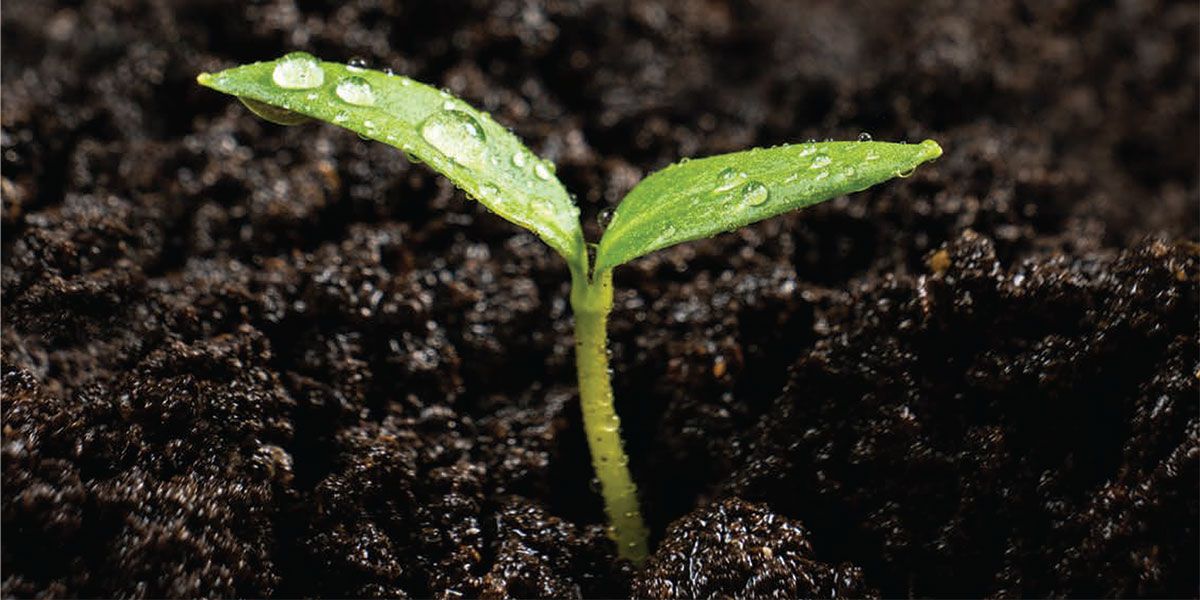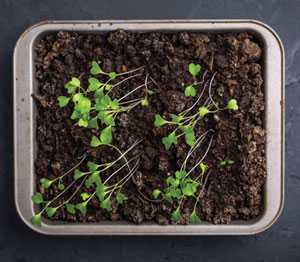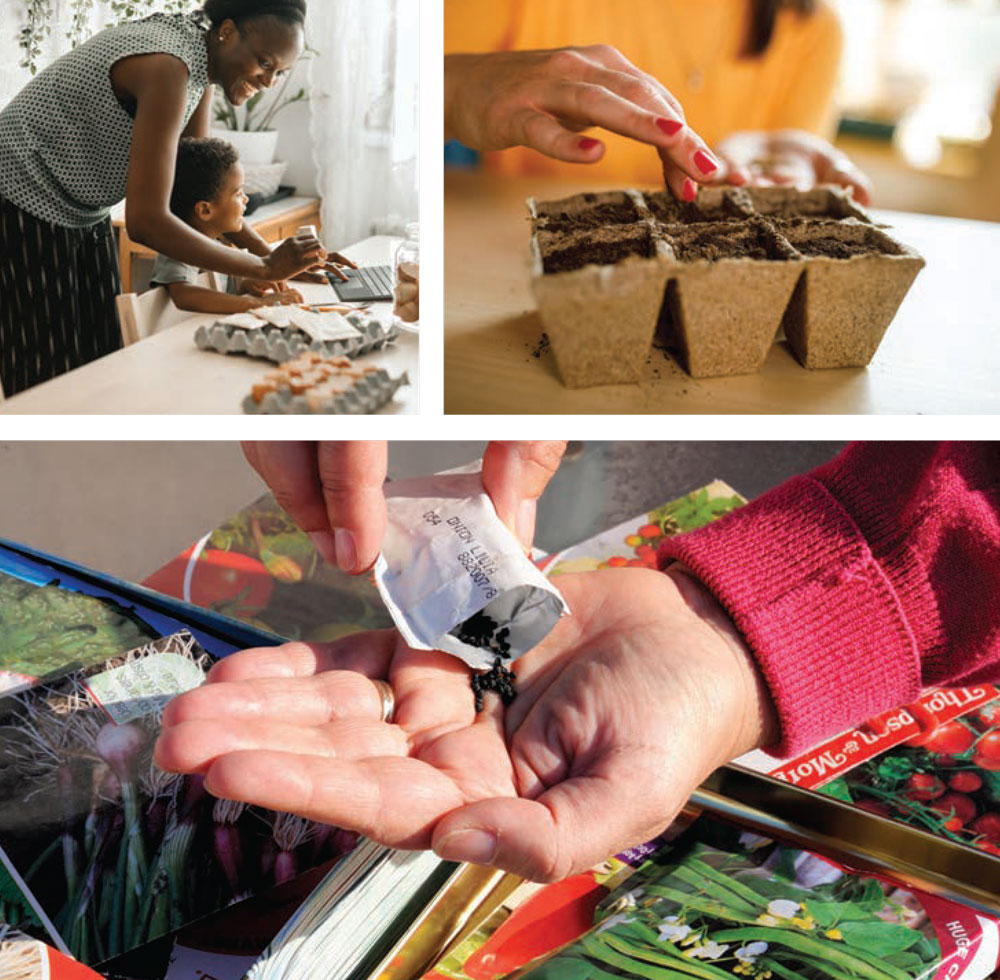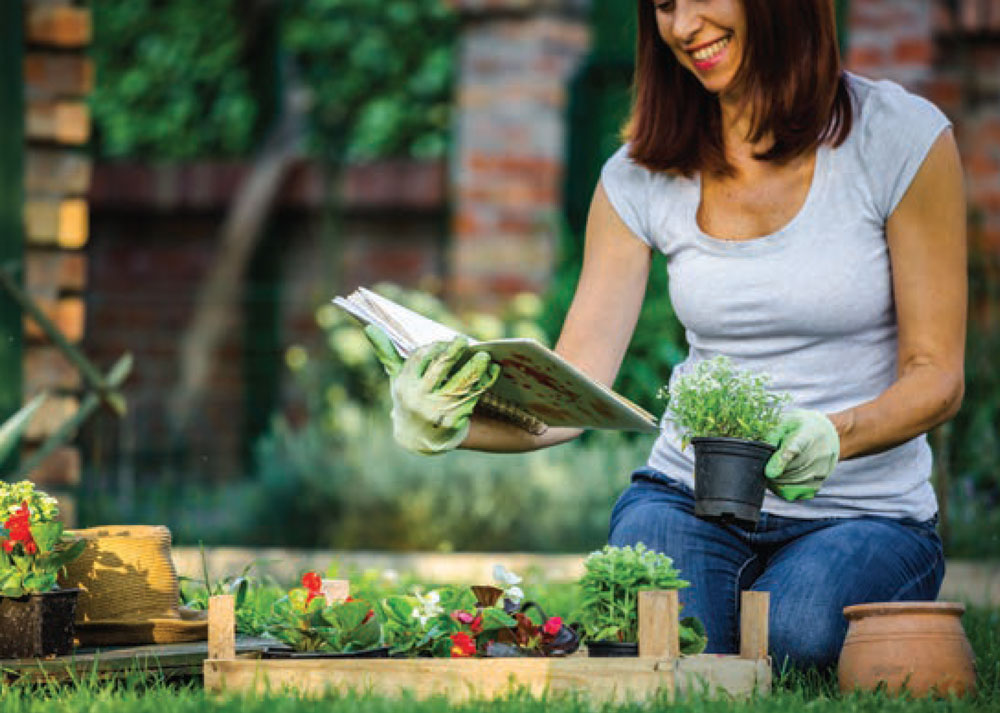Seeds of Hope | Planning Your Garden

What better way to banish the wintertime blues than to begin planning your vegetable garden when those first seed catalogs begin arriving? After all, nothing embodies more hope than a tiny seed, and with a modicum of effort and a few specialized materials even novice gardeners can successfully grow healthy foods in backyard gardens.
All it takes is a bit of research into the best varieties of plants for Central Virginia conditions and the ability to follow some tried-and-true guidelines for placing seeds in containers, providing a light source, food, water, and warmth, and then allowing the seeds to germinate and grow before transplanting outdoors.
Why start seeds indoors?
Sowing vegetable seeds indoors is much less expensive than buying established plants and gives you a head start on the growing season. In addition to these cost-and time-saving measures, ordering seeds from catalogs and starting them indoors gives you access to varieties of vegetable plants unavailable at local greenhouses or garden centers.
Poll your family members to learn their favorite vegetables before deciding which ones to experiment with, and then research the growing zone you live in. Fast fact: Central Virginia and most of the Roanoke area are in Zone 7 (some higher elevations are 6). This information will allow you to devise your own timetable for starting your seeds indoors. Find the Urban Farmer’s Virginia Vegetable Planting Calendar online to find sample planting guides.
Dustin Formon, local grower and owner of SoulShine Farms in Bedford, Va. recommends that gardeners purchase their seeds from reliable companies such as Johnny’s Selected Seeds, High Mowing Organic Seed Co., Seed Savers Exchange or Southern Exposure Seed to increase their chances for success.
 Factors impacting germination
Factors impacting germination
Home gardeners must be mindful of the four factors affecting seed germination: water, light, oxygen and heat. A continuous supply of moisture is critical, and, although light requirements may vary somewhat for different types of plants, seeds generally require light for 18 hours per day. In the absence of enough natural light, fluorescent lights suspended 6-12 inches above the seeds are effective supplemental light sources. Although heat requirements may vary slightly from variety to variety, most seeds do best at temperatures between 65° and 75°. This often means that germination flats must be placed on radiators or heat mats to maintain ideal temperatures.
Media and containers
A good medium for seed germination should be finely textured, loose, and free of insects, disease organisms and weed seeds. Manmade soil-less mixtures can either be purchased already combined, or the ingredients may be purchased individually and combined by the gardener using the recipe below:
- 4 quarts shredded sphagnum peat moss
- 4 quarts of fine-grade vermiculite
- 1 tablespoon of superphosphate
- 2 tablespoons of ground limestone
These mixes have low fertility so seedlings must be watered with a diluted fertilizer as soon as germination occurs.
Garden centers sell many types of containers for starting seeds. Some of the easiest to use are plastic ones divided into cells with pre-drilled holes for proper drainage. These are sized to rest inside plastic trays to catch run-off and are often accompanied by domed lids that create a greenhouse effect.
Seed-shopping tips
- Be sure to buy quality, disease-resistant seeds for the right growing zone (Central Virginia is in Zone 7).
- Include some flower seeds to increase the pollinators in your garden.
- Start a journal to record what seedsyou plant, where you bought them, and outcomes, so you can make adjustmentsnext year.
Seeding and watering
The best times for sowing seeds depend on when plants can safely be transplanted outdoors. This is when the online timetables that take your growing zone and date of last frost into account are useful. A common mistake of novice gardeners is to sow their seeds too early and then attempt to hold the seedlings inside for too long because the outdoor air and soil aren’t warm enough for the seedlings to go in the ground. The result is leggy, weak seedlings that won’t be able to withstand transplantation.
Transplanting and hardening
Once seedlings have formed their first “true leaves,” they will require more growing space and need to be transplanted to larger cells or small pots. Weekly applications of soluble fertilizer will produce healthy, dark green seedlings with strong root systems ready to be “hardened” through a process designed to acclimate tender plants to environments ever closer to those of the outdoors. By the end of the one- to two-week stretch of time in the seedlings’ hardening process, they should be able to withstand 45° to 50° temperatures in the shade protected from strong wind. After gradually exposing the seedlings to longer periods of indirect sunlight while reducing the frequency of watering to slow their growth, the young plants should finally be ready to transition to their spots in your garden where they will grow to maturity with careful tending.
Benefits of growing from seeds
Although the process of starting seeds indoors may seem laborious, it is well within the grasp of the novice gardener. With the abundance of internet resources at our fingertips, anyone can learn to grow plants from seeds. How better to recapture the childlike delight of playing in the dirt than by planting one’s own vegetable garden? The expenditure of time and effort (plus money!) will be well worth the satisfaction of knowing where your food came from and getting reconnected to Mother Earth. ✦
garden centers, greenhouses, limestone, seed germination, sphagnum, superphosphate, transplanting, Vegetable Garden, vegetable seeds, vermiculite, Zone 7








